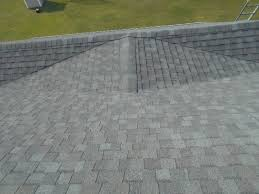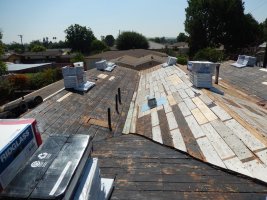As soon as I was on the roof I said that valley is flat.

They insisted that since the bubble is not exactly centered, there is absolutely a slope.

I drove it home with a digital level.

The reality is that any slope is good enough. My level would not register any slope.
R908.1 General. Materials and methods of application used for re-covering or replacing an existing roof covering shall comply with the requirements of Chapter 9.
Exceptions:
1. Reroofing shall not be required to meet the minimum design slope requirement of one-quarter unit vertical in 12 units horizontal (2-percent slope) in Section R905 for roofs that provide positive roof drainage.
They insisted that since the bubble is not exactly centered, there is absolutely a slope.
I drove it home with a digital level.
The reality is that any slope is good enough. My level would not register any slope.
R908.1 General. Materials and methods of application used for re-covering or replacing an existing roof covering shall comply with the requirements of Chapter 9.
Exceptions:
1. Reroofing shall not be required to meet the minimum design slope requirement of one-quarter unit vertical in 12 units horizontal (2-percent slope) in Section R905 for roofs that provide positive roof drainage.


